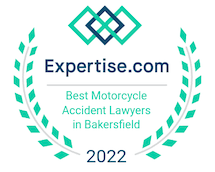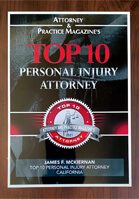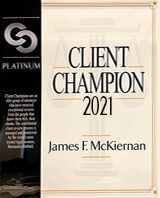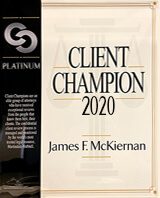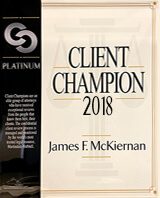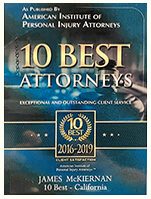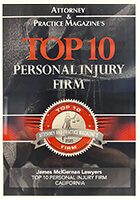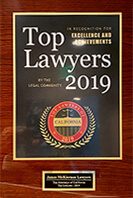What Constitutes a Distracted Driving Accident?

Most people think they know what distracted driving looks like: someone staring down at their phone, typing a text message. While that’s a major problem, it’s only one piece of the puzzle. A driver can be just as distracted while adjusting their GPS, eating a sandwich, or getting lost in a conversation with a passenger. Any of these actions can lead to a devastating crash. Legally, what constitutes a distracted driving accident is any situation where a driver’s lack of focus causes harm to others. This guide will explore the many forms of distraction, explain the alarming impact they have on our roads, and detail the steps you can take to prove another driver’s negligence caused your injuries.
Key Takeaways
- A Distracted Driver is a Negligent Driver: Any action that takes a driver’s focus off the road is considered negligence, which is the foundation for holding them financially responsible for your injuries.
- Proving Distraction Requires the Right Evidence: A strong case is built on concrete proof, which an attorney can help you gather by subpoenaing cell phone records, interviewing witnesses, and analyzing police reports and camera footage.
- Compensation Should Cover All Your Losses: You have the right to seek payment for every impact the accident has had on your life, including medical bills, lost income, future care needs, and the significant toll of pain and suffering.
What Is Distracted Driving?
When you’ve been hit by another driver, you’re often left wondering what went wrong. In many cases, the answer is distracted driving. Simply put, distracted driving is any activity that pulls a person’s attention away from the task of driving safely. The Centers for Disease Control and Prevention (CDC) defines it as doing anything that takes your focus off the road, which significantly increases the likelihood of a crash. While most people immediately think of texting, distractions come in many forms, from adjusting the radio to talking with a passenger or even just being lost in thought.
Understanding what legally constitutes distracted driving under California law is a critical first step in building your personal injury case. If another driver’s inattention caused your accident, they were being negligent. Proving that negligence is our job, and it starts with identifying the specific actions that led to the crash. It’s not just about breaking a rule; it’s about a driver failing in their fundamental duty to operate their vehicle with care and attention. When they fail, and you get hurt, they can and should be held accountable for the harm they’ve caused.
The Three Main Types of Distractions
To fully grasp how a driver can become distracted, it helps to break it down into three main categories. Safety experts identify these distinct types of distractions, and often, a single action can involve more than one, making it especially dangerous. The three primary types of distraction are:
- Visual: Anything that causes you to take your eyes off the road.
- Manual: Anything that causes you to take your hands off the steering wheel.
- Cognitive: Anything that takes your mind off the act of driving.
Texting while driving is a perfect example of an activity that combines all three. The driver looks at their phone (visual), types with their hands (manual), and thinks about the message they’re sending or reading (cognitive). This triple threat is why using a cell phone behind the wheel is one of the most hazardous things a driver can do.
Visual Distractions
A visual distraction is anything that diverts a driver’s eyes from the road ahead. Even a few seconds of looking away can be catastrophic. At 55 miles per hour, a car travels the length of a football field in the time it takes to read a short text message. Common examples of visual distractions include looking at a GPS or navigation system, checking your reflection in a mirror, watching an event happening on the side of the road, or turning to look at passengers in the back seat. When a driver’s eyes aren’t on the road, they can’t see traffic slowing, a pedestrian crossing, or a stoplight changing, leading to devastating rear-end collisions and other accidents.
Manual Distractions
Manual distractions occur whenever a driver takes one or both hands off the steering wheel to do something else. Driving requires constant, small adjustments to stay in your lane and react to changing conditions. Without full control of the wheel, a driver’s ability to respond to a sudden hazard is severely limited. We often see accidents caused by manual distractions like eating or drinking, adjusting the radio or climate controls, reaching for an item that fell on the floor, or trying to restrain a pet. These actions may seem harmless, but they compromise a driver’s ability to swerve or brake suddenly to avoid a collision.
Cognitive Distractions
Perhaps the most overlooked type of distraction is cognitive. This happens when a driver’s mind isn’t focused on driving, even if their eyes are on the road and their hands are on the wheel. You might be physically present, but your mind is elsewhere. Common cognitive distractions include being deep in thought about work or personal problems, daydreaming, or becoming engrossed in a conversation with a passenger or on a hands-free phone call. This mental disconnect slows reaction time just as dangerously as other distractions. A driver who is not mentally engaged cannot process and react to road conditions effectively, putting everyone around them at risk.
What Are the Leading Causes of Distracted Driving?
When we think of distracted driving, texting is usually the first thing that comes to mind. While it’s a major culprit, it’s far from the only one. A distraction is anything that pulls your focus from the primary task of operating your vehicle safely. Many everyday activities that seem harmless can turn deadly when you’re behind the wheel. These actions fall into three categories: visual, manual, and cognitive distractions. Often, a single activity can involve all three, making it especially dangerous. Understanding the most common causes can help you stay safer on the road and recognize when another driver’s negligence has caused an accident. If you’ve been injured by a driver who wasn’t paying attention, it’s important to know that their seemingly small action has serious legal consequences.
Texting and Cell Phone Use
Using a cell phone is one of the most hazardous things a driver can do. Sending a text, scrolling through social media, or even talking on the phone creates a perfect storm of distraction. It takes your eyes off the road (visual), your hands off the wheel (manual), and your mind off of driving (cognitive). According to the CDC, distracted driving is any activity that takes your attention away from the road, and texting is a prime example. Even a few seconds of looking at your phone is enough time to travel the length of a football field at 55 mph. In that short span, you could miss a stopped car, a pedestrian, or a changing traffic light, leading to a devastating and entirely preventable crash.
GPS and In-Dash Systems
Modern vehicles come equipped with advanced infotainment and navigation systems that can be just as distracting as a cell phone. Programming a destination into a GPS, changing a song, or adjusting settings on a touchscreen requires you to take your eyes and mind off the road. Even hands-free, voice-activated systems can cause significant cognitive distraction, as your brain is focused on the conversation with the system instead of the complex task of driving. These built-in systems create a false sense of security, but any action that diverts your full attention puts you, your passengers, and everyone else on the road in danger.
Eating, Drinking, and Grooming
Your morning commute isn’t the time to have breakfast or finish getting ready. Activities like eating, drinking, or applying makeup are common but risky behaviors behind the wheel. Unwrapping a sandwich, fumbling with a coffee cup lid, or looking in the mirror to fix your hair are all manual and visual distractions. A spilled drink can cause a driver to swerve suddenly, and reaching for a dropped item can lead to a complete loss of control over the vehicle. These may seem like minor tasks, but they significantly increase the chance of a motor vehicle crash by taking your hands off the wheel and your eyes off the road at a critical moment.
Passengers and Other In-Car Distractions
While having company in the car can be enjoyable, passengers can also be a major source of distraction. A serious conversation, an argument, or trying to manage children or pets in the back seat can easily divert a driver’s attention. Even something as simple as changing the radio station or adjusting the climate controls can be risky. These actions might only take a second, but that’s all it takes for a situation on the road to change. A driver is responsible for maintaining focus, regardless of what else is happening inside the vehicle. When they fail to do so and cause an accident, they can be held accountable for their negligence.
Understanding the True Impact of Distracted Driving
It’s easy to think of distracted driving as a quick glance at a phone, but the reality is far more serious. These actions have devastating consequences that ripple through families and communities every day. The numbers paint a grim picture, but behind every statistic is a real person whose life has been changed forever by a preventable accident. Understanding the true scope of this problem is the first step toward holding negligent drivers accountable and ensuring victims get the support they need.
The Alarming Statistics on Injuries and Fatalities
The data on distracted driving is sobering. According to the Centers for Disease Control and Prevention (CDC), crashes involving a distracted driver kill about nine people every day in the United States. In a single recent year, more than 3,100 people lost their lives and an estimated 424,000 were injured because a driver wasn’t paying attention. These aren’t just abstract figures; they represent parents, children, and friends who were seriously hurt or taken from their loved ones. One moment of carelessness can lead to a lifetime of pain and loss for someone else.
Why Teen Drivers Are at a Higher Risk
While any driver can be distracted, teens are especially vulnerable. Their lack of experience behind the wheel, combined with a higher likelihood of using their phones, makes for a dangerous combination. In fact, federal data shows that drivers under 20 have the highest proportion of distraction-related fatal crashes. This heightened risk underscores the importance of education and setting clear rules for young drivers. For parents, it’s a critical reminder to have ongoing conversations about the serious responsibilities that come with driving and the irreversible consequences of taking their eyes off the road.
The Financial Cost of a Single Accident
Beyond the physical and emotional trauma, a distracted driving accident can create a massive financial crisis. Serious injuries like brain trauma or spinal cord damage often require extensive medical treatment, surgeries, and long-term rehabilitation. The medical bills can quickly become overwhelming, especially when you’re also losing income because you can’t work. The financial toll of a single crash can easily run into hundreds of thousands of dollars. If you were injured by a distracted driver, you shouldn’t have to carry this burden alone. You have the right to seek compensation to cover your medical expenses, lost wages, and other damages.
How to Prove a Driver Was Distracted
After a car accident, it’s one thing to suspect the other driver was distracted, but it’s another to prove it. Because distracted driving is a form of negligence, establishing it is a critical step in building a strong personal injury claim. The other driver is unlikely to admit they were texting or otherwise not paying attention, so it often falls on you and your legal team to uncover the truth.
Fortunately, you don’t have to find this proof alone. An experienced attorney knows exactly where to look for evidence that can demonstrate the other driver wasn’t focused on the road. By piecing together different types of evidence—from official records to witness accounts—we can create a clear picture of what really happened in the moments leading up to the crash. This evidence is essential for holding the responsible driver accountable and securing the compensation you need to recover.
Using Cell Phone Records as Evidence
In many distracted driving cases, the driver’s cell phone is the key piece of evidence. While you can’t just ask for someone’s phone records, your lawyer can. Through a legal process called discovery, we can subpoena the driver’s cell phone records from their service provider. These records provide a detailed, time-stamped log of all activity, including incoming and outgoing calls, text messages, and data usage.
By comparing the timeline of the driver’s phone activity with the exact time of the accident, we can often show that they were talking, texting, or browsing the internet right when the crash occurred. This type of objective data is incredibly powerful because it’s hard for the at-fault driver to argue with. It provides concrete proof that their attention was on their device, not on the road.
The Importance of Witness Testimony
What other people saw can be just as crucial as technical data. Eyewitnesses who are not involved in the accident can provide unbiased accounts of the other driver’s behavior. They may have noticed the driver looking down at their lap, holding a phone to their ear, or even eating or applying makeup just before the collision. These observations can paint a vivid picture for an insurance adjuster or a jury.
This is why it’s so important to gather contact information from anyone who stopped at the scene. Even if you were unable to do so, a skilled legal team can often locate and interview witnesses after the fact. A formal statement from a credible witness can corroborate other evidence and significantly strengthen your claim that the other driver’s distraction caused your injuries.
Reviewing Police Reports and Camera Footage
The official police report is often the first document we analyze when investigating an accident. When officers arrive at the scene, they document their observations, and sometimes the at-fault driver might even admit to being distracted. The officer might note that the driver seemed unfocused or that a phone was visible in the car. Any mention of distraction in the official police report can serve as a valuable piece of evidence.
Beyond the report, we also search for video evidence. Many intersections have traffic cameras, and nearby businesses often have security cameras that may have captured the accident. Dashcam footage from your vehicle or other witnesses can also provide indisputable proof. A clear video of the other driver running a red light while looking at their phone can make your case undeniable.
Finding Clues at the Accident Scene
If you are safely able to do so, documenting the scene immediately after a crash can help preserve important evidence. The moments after a collision can reveal clues about what the other driver was doing. For example, you might see a cell phone on the floor of their car, spilled food or drinks, or a makeup kit on the passenger seat. These details can suggest the driver was engaged in a distracting activity.
Taking photos or videos with your smartphone can capture this evidence before it gets cleaned up or moved. Photograph the position of the cars, any debris on the road, and the inside of the other driver’s vehicle if possible. These initial observations can provide a starting point for your attorney’s investigation and help build a compelling narrative about the cause of the accident.
What Legal Consequences Do Distracted Drivers Face?
When a driver chooses to look at their phone instead of the road, they aren’t just risking a crash—they’re also facing significant legal trouble. The consequences for distracted driving extend beyond a simple traffic ticket. A driver who causes an accident because they were distracted can face penalties from the state of California, including fines and points on their license, as well as civil liability for the harm they’ve caused to others. Understanding these consequences is a key step in holding the at-fault driver accountable and securing the compensation you need to recover.
Criminal Penalties and Fines
In California, it is illegal to use a handheld cell phone or electronic device while operating a vehicle. The state enforces this with fines that can quickly add up. While a first-offense base fine is $20, various state and county fees increase the total cost to over $150. For a second or subsequent offense, that total can jump to over $250. While these fines are a direct penalty, they are often just the beginning of the financial fallout for a distracted driver. These penalties are designed to discourage dangerous behavior, but they don’t provide any direct support to the victims of that behavior.
Civil Liability in a Personal Injury Claim
Beyond state-issued fines, a distracted driver is financially responsible for the injuries and damages they cause. In legal terms, distracted driving is a clear form of negligence. This negligence forms the basis of a personal injury claim, which is how you can seek compensation for your losses. Through a claim, you can hold the at-fault driver accountable for your medical expenses, lost wages from time off work, vehicle repairs, and the pain and suffering you’ve endured. California law allows you to recover damages even if you are found to be partially at fault for the accident, though your final compensation would be reduced accordingly.
Points on a Driving Record and License Suspension
The consequences of a distracted driving ticket also impact a person’s driving record. In California, a conviction for using a handheld device while driving will add one point to the driver’s license. Insurance companies often raise rates for drivers with points on their record, leading to long-term financial costs. Furthermore, California’s Negligent Operator Treatment System tracks these points. If a driver accumulates too many points in a set period—for example, four points in 12 months—the DMV can suspend their license. This shows that the state takes repeat offenses seriously, as they demonstrate a pattern of unsafe driving.
What Compensation Can You Recover After an Accident?
When you’re dealing with the aftermath of an accident, the last thing you want to worry about is money. But the reality is that injuries come with costs—both financial and personal. The goal of a personal injury claim is to secure compensation, legally known as “damages,” to cover these losses and help you piece your life back together. This isn’t about a windfall; it’s about fairness and ensuring the person who caused the accident is held responsible for the harm they’ve caused.
The compensation you can recover is typically broken down into a few key categories. It covers the tangible, out-of-pocket expenses you can track with receipts, like medical bills and lost wages. It also covers the more personal, intangible impacts the accident has had on your life, such as physical pain and emotional distress. Understanding what you’re entitled to is the first step toward getting the resources you need to heal and move forward. Because it can be difficult to calculate the full extent of your losses, especially those that will continue into the future, working with an experienced attorney is crucial. They can help you identify every area of loss to ensure your claim is complete and you don’t settle for less than you deserve.
Medical Bills and Ongoing Care
From the initial ambulance ride and emergency room visit to surgeries, physical therapy, and prescription medications, medical costs can add up incredibly fast. A personal injury claim is designed to cover all of these expenses. Distracted driving accidents can result in devastating harm, including brain trauma and spinal cord damage, which often require long-term or even lifelong care. Your compensation should account for not just the bills you have today, but also the estimated cost of any future medical treatment you’ll need as you continue to recover. This ensures you won’t be left paying out-of-pocket for necessary care down the road.
Lost Income and Future Earnings
An injury often means time away from work, which translates to lost paychecks when you can least afford it. You have the right to be compensated for the wages you’ve lost while recovering. But what if your injuries are so severe that they permanently affect your ability to do your job or work at all? In that case, your claim can also include compensation for loss of future earning capacity. This is a critical component that helps provide financial stability if the accident has changed the course of your career and your ability to provide for your family.
Pain and Suffering
Not all injuries are visible, and not all losses come with a price tag. The law recognizes that the physical pain, emotional distress, and general loss of enjoyment of life you experience after an accident are very real damages. This category of compensation, known as “pain and suffering,” is meant to address the human cost of the accident. In California, you can still recover these damages even if you were partially at fault for the accident. However, your final compensation amount would be reduced by your percentage of blame under the state’s comparative negligence rule.
Vehicle Repair or Replacement
If your car was damaged in the accident, you are entitled to compensation to either repair it or, if it’s declared a total loss, replace it with a vehicle of similar value. This extends beyond just your car. Any personal property that was damaged or destroyed in the crash—like a cell phone, laptop, or child’s car seat—should also be included in your property damage claim. It’s important to keep receipts and get estimates for these items to ensure you are fully reimbursed for everything you lost due to the other driver’s negligence.
Your First Steps After a Distracted Driving Accident
The moments after a car crash are disorienting and stressful. It’s hard to think clearly, but the actions you take right away can significantly impact your health and your ability to recover fair compensation. By focusing on a few key steps, you can protect yourself and start building a strong foundation for your claim.
What to Do Immediately at the Scene
Your first priority is always safety. Check yourself and your passengers for injuries, and if anyone is hurt, call 911. If possible, move your vehicle to a safe location out of traffic. Once you’re safe, exchange insurance and contact information with the other driver, but avoid discussing fault or apologizing. If it is safe to do so, look for signs that the other driver was distracted. Did you see a phone in their hand or on the floor? Are there food wrappers or a makeup kit? Use your phone to take pictures of the accident scene, vehicle damage, and any visible evidence of distraction. The California DMV provides a helpful checklist of what to do after a collision.
How to Document Important Evidence
Beyond the photos you take, other crucial evidence can help prove your case. If there were witnesses, ask for their names and phone numbers. An independent account of what happened can be incredibly powerful. Note the exact location, time of day, and weather conditions. Also, look for potential sources of video footage from nearby businesses, traffic lights, or doorbell cameras. While you can’t access some evidence on your own, an experienced attorney can subpoena phone records to determine if the other driver was using their phone at the moment of impact. This official documentation can be a game-changer for your claim.
Why You Should Seek Medical and Legal Advice
Even if you feel fine, it’s essential to see a doctor after an accident. Adrenaline can mask serious injuries like whiplash or concussions that may not show symptoms for hours or even days. A medical evaluation creates an official record of your injuries, which is vital for connecting them to the crash. It’s also wise to speak with a personal injury lawyer as soon as possible. The other driver’s insurance company will likely contact you quickly to settle for the lowest amount possible. A lawyer acts as your advocate, protecting your rights and handling all communications. They can help you pursue the full compensation you deserve for medical bills, lost wages, and pain and suffering.
How We Can All Help Prevent Distracted Driving
After an accident, it’s easy to feel powerless, especially when someone else’s carelessness is to blame. But preventing these crashes isn’t just up to lawmakers and police officers; it’s a responsibility we all share. Every time we get behind the wheel, we have the power to model safe behavior. And every time we talk to a friend or family member, we have an opportunity to change the conversation around what’s acceptable on the road. Creating safer streets starts with small, intentional actions that ripple outward.
While you can’t undo the accident that brought you here, you can be part of the solution that protects others. By understanding the core issues and taking simple steps, we can collectively build a culture of attentiveness and care. It’s about more than just following the rules; it’s about actively protecting our communities, our families, and ourselves. From educating the people we love to supporting stronger policies, everyone has a role to play in putting an end to distracted driving for good.
Spreading Awareness Through Education
The first step in solving a problem is making sure everyone understands it. Distracted driving is anything that takes your attention away from driving, and it’s not just about texting. It’s changing the playlist, grabbing a snack from the passenger seat, or getting deep into a conversation with a passenger. The most powerful tool we have is our own voice. Talk to your friends, your parents, and especially any new teen drivers in your life about these risks. Sharing what you know and setting a firm example can help the people you care about build safe habits that last a lifetime. A simple conversation can be the reminder someone needs to keep their eyes—and their mind—on the road.
Using Technology to Reduce Distractions
While technology is often the source of the problem, it can also be a key part of the solution. Our smartphones are designed to grab our attention, but they also have powerful features to help us ignore them when it matters most. Most phones have a “Do Not Disturb While Driving” mode that can be set to activate automatically when you’re in a moving car. This feature silences notifications and can even send an auto-reply to texts, letting people know you’ll get back to them when you’ve safely arrived. Taking five minutes to set up this feature is a simple, proactive step that removes the temptation to look at your phone, making it easier to focus completely on driving.
The Role of Stronger Enforcement
Clear rules and consistent enforcement are essential for creating safer roads. In California, laws like Vehicle Code 23123.5 make it illegal for drivers to hold and use a cell phone or any other electronic device while driving. These laws exist for a reason—they save lives. When we all commit to following them, we contribute to a safer driving environment for everyone. Supporting strong enforcement and, more importantly, holding ourselves accountable to these standards sends a clear message that distracted driving is not acceptable in our communities. Adhering to the law isn’t just about avoiding a ticket; it’s about respecting the well-being of every other person on the road.
Getting Involved in Your Community
Change often starts at the grassroots level, right in our own neighborhoods. You can make a difference beyond your own driving habits by getting involved in local safety initiatives. This could mean supporting programs at local high schools that educate young drivers or participating in community awareness campaigns. Organizations like the National Safety Council offer resources and information you can share with others. By adding your voice to the cause, you help reinforce the message that safety is a community priority. Sharing personal stories and engaging in local events can transform attitudes and foster a culture where every driver is committed to paying attention.
How We Fight for Victims of Distracted Driving
When you’re recovering from an accident, the last thing you should have to worry about is battling an insurance company. Our team steps in to handle the legal complexities so you can focus on healing. We approach every distracted driving case with a clear strategy: build an undeniable case on your behalf and fight tirelessly to get you the full compensation you need to move forward. Here’s a look at how we do it.
Building a Strong Case for You
Proving another driver was distracted is the key to your claim. In legal terms, distracted driving is a form of negligence, which means the other driver failed to act with reasonable care, causing your injuries. Our job is to gather the proof. We dig deep to find evidence that tells the whole story, from subpoenaing cell phone records and analyzing police reports to tracking down surveillance footage from nearby businesses. We also work with accident reconstruction experts who can show exactly how the collision happened. We leave no stone unturned in building a powerful case that clearly demonstrates the other driver’s fault.
Securing the Compensation You Deserve
If you were injured by a distracted driver, you have the right to seek money to cover your losses. This isn’t just about the immediate medical bills; it’s about your future. We fight for compensation that covers everything from ongoing physical therapy and lost wages to the pain and suffering you’ve endured. California law allows you to recover damages even if you were partially at fault for the accident, so don’t let uncertainty stop you from exploring your options. Our goal is to ensure the settlement or verdict you receive truly reflects the full impact the accident has had on your life.
Related Articles
- Distracted Driving Accident | James McKiernan Lawyers
- Technological Distractions Lead to Increase in Car Crashes In USA
- Impaired Drivers are One of the Leading Causes of Auto Accidents
- San Luis Obispo Accident Lawyers – James McKiernan Lawyers
- NC Driving Laws to Know About in 2019
Frequently Asked Questions
What if I think I might have been partially at fault for the accident? This is a very common concern, but it shouldn’t stop you from seeking help. California follows a “comparative negligence” rule, which means you can still recover compensation even if you were partially responsible for the crash. The amount you receive would simply be reduced by your percentage of fault. Our job is to investigate what happened and build a case that accurately shows how the other driver’s distraction was the primary cause of your injuries.
Is talking on a hands-free device still considered distracted driving? While California law allows for hands-free phone calls, that doesn’t mean the driver isn’t distracted. A driver can be looking at the road with both hands on the wheel but still be mentally checked out while deep in a conversation. This is called cognitive distraction, and it significantly slows reaction times. If a driver’s hands-free call contributed to the accident, it can absolutely be used as evidence of their negligence in your personal injury claim.
What if I don’t have a photo or video of the other driver using their phone? You don’t need a “smoking gun” photo to have a strong case. Proving distracted driving often involves piecing together many different types of evidence. We can use witness statements, police reports, and the driver’s own cell phone records—which we can obtain legally—to create a clear timeline that shows they were not paying attention at the moment of the crash. Your focus should be on your recovery; let us handle the investigation.
How much does it cost to hire an attorney for my case? We understand that you’re already facing unexpected medical bills and financial stress. That’s why our firm, like most personal injury law firms, works on a contingency fee basis. This means you pay no upfront fees. We only get paid if we successfully recover compensation for you, either through a settlement or a court verdict. Our fee is a percentage of the amount we win, so you never have to worry about paying out of pocket.
How long do I have to file a claim after being hit by a distracted driver? In California, there is a time limit, known as the statute of limitations, for filing a personal injury lawsuit. For most car accident cases, you have two years from the date of the injury to file a claim. While that might sound like a long time, it’s critical to act quickly. Evidence can disappear and memories can fade, so starting the process sooner allows your legal team to build the strongest possible case on your behalf.









